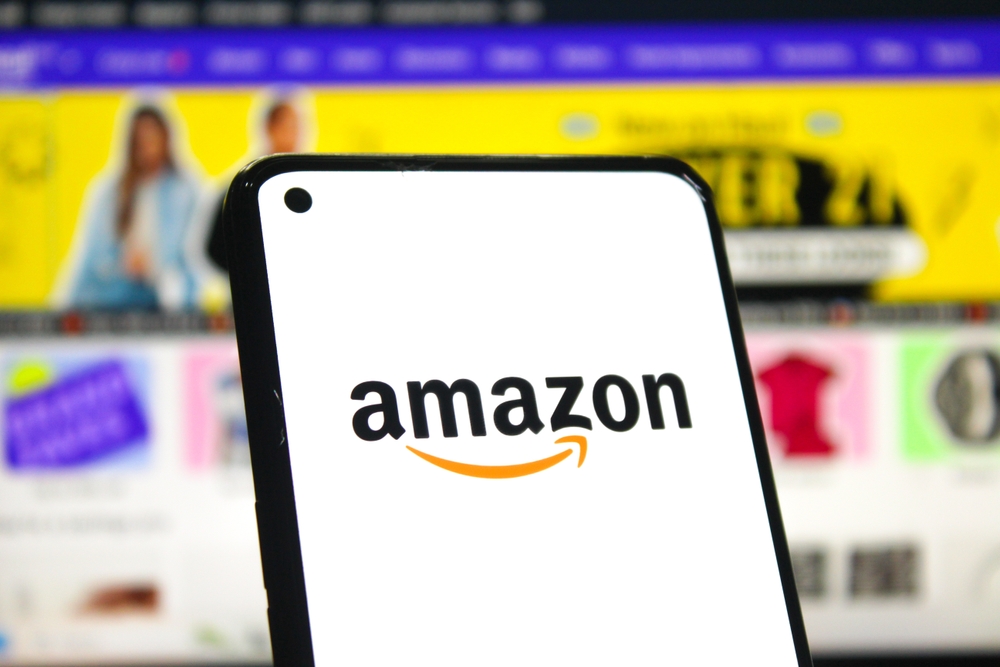Here’s the lowdown: while frugal millionaires can afford basically anything, they’ve learned that true wealth isn’t about flashing cash—it’s about making every dollar work harder than they do. These savvy savers skip the needless splurges and focus on what really moves the needle: investments, experiences, and smart long-term planning. So if you’ve ever wondered what separates a millionaire who burns through paychecks from one who multiplies them, read on.
1. Artisan Coffee Runs

We all love that morning ritual of swinging by our favorite café and snagging a fancy latte. But frugal millionaires know that dropping $4 or $5 a day on artisan coffee is like flushing money down a financial drain. According to CBS MoneyWatch, retail coffee prices hit record highs this spring, with the average American paying nearly $7.38 per pound—a markup that translates to about $110 billion spent on coffee annually nationwide CBS News. At $5 per cup, over a year that’s more than $1,800 that could’ve been put into a high-yield savings account or low-cost index fund. Millionaires recognize that brewing a pot at home and pouring into a reusable mug delivers essentially the same caffeine hit for pennies on the dollar. They invest in a quality burr grinder or cold-brew system once and reap the savings year after year. Batch-brewing drip coffee means no expectations of barista foam art or chalkboard menu status. That homegrown ritual can be just as satisfying, especially when paired with a financial win.
Some set up a standard “coffee fund” in their investment portfolio, directing the sum they would have spent on café runs into a tax-efficient brokerage account. Others cycle through subscriptions to green-bean co-ops that deliver beans quarterly, ensuring variety and controlling costs. The ritual of grinding beans, heating water, and savoring the aroma can beat any overpriced takeaway line. And the stainless-steel travel mug becomes a badge of budget-conscious pride, not just a prop for social media. When friends ask why you’re skipping the café, you can drop the stat about Americans spending over $100 billion on coffee each year and watch jaws drop. It’s not about deprivation—it’s about channeling small savings into big returns. Frugal millionaires live by the mantra: pay attention to little leaks, and soon your wealth will stay afloat.
2. Bottled Water

Bottled water might seem like a harmless convenience, but frugal millionaires treat that plastic clamshell like a silent wallet assassin. A recent Food & Wine report shows that tap water under EPA regulations is usually just as pure—if not purer—than most bottled options Food & Wine. Yet bottled water can cost up to 3,100 percent more per gallon, according to Harvard University data. That means paying $1.25 for a 16-ounce bottle when the same volume from the tap is virtually free. Millionaires invest instead in pitcher filters, under-sink systems, or sleek steel bottles that pay for themselves in savings within weeks. Those filters often last months or even years, turning hydration into an eco-conscious habit. And when you carry your own bottle, you never fall prey to airport or convenience-store price shocks.
Some of the world’s richest swap plastic for glass, choosing countertop dispensers that make refills a breeze. Others use specialized filters to remove microplastics and improve taste, spending under $0.05 per gallon for premium-quality water. It’s a small change that shaves hundreds off household bills each year—and keeps hundreds of plastic bottles out of landfills. Friends might giggle over your plain tumbler, but you’ll smile when you see the balance in your investment account grow. Frugal millionaires understand that true value flows where savings compound. They sip smart—and their net worth reflects every drop they don’t spend. After all, wealth is less about what you drink and more about what you don’t waste.
3. Lottery Tickets
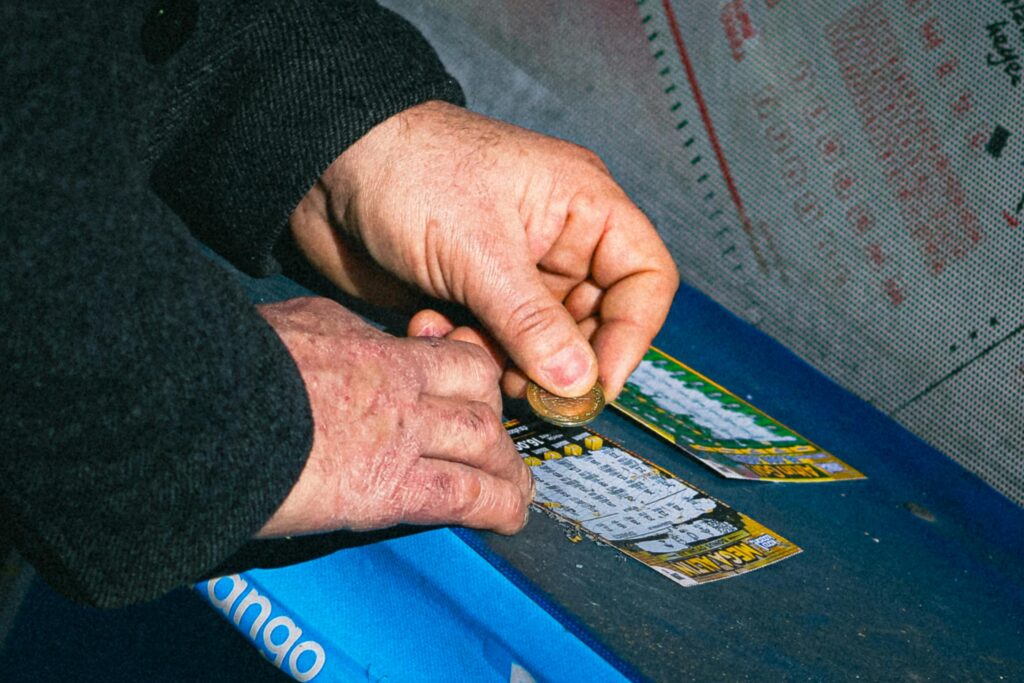
Chasing a multi-million-dollar windfall at the lottery office might feel like harmless fun, but frugal millionaires view those tickets as a “hope tax” on their future wealth. NPR’s Throughline podcast reports Americans spend over $100 billion on lottery tickets each year—money that could be invested instead for consistent returns. With odds of a Powerball jackpot hovering around one in 292 million, you’re far more likely to be struck by lightning. Yet countless hopefuls drop spare change on numbers that statistically will never hit. Millionaires recognize that steady compounding in a diversified portfolio outperforms dream-chasing every single time. A simple, recurring $10-per-week investment into a low-fee index fund can grow far more reliably. And there’s no chance of losing it all on a single bad draw.
Instead of lining up at convenience stores, they automate transfers into brokerage accounts, treating investing like an unavoidable bill. Over 30 years, that disciplined $10 weekly converts into tens of thousands, assuming a modest 7 percent annual return. Compound interest isn’t flashy, but it’s real—and it doesn’t require a lucky ticket. When friends lament lottery losses, millionaire savers shrug and talk dividends instead of dollar signs. Sure, the dream of instant riches is thrilling, but building real wealth is a marathon, not a lottery sprint. And for those serious about financial freedom, the only ticket worth buying is one to the portfolio.
4. Extended Warranties

When you’re offered an extended warranty at checkout, it can feel comforting—but frugal millionaires know it’s often a costly comfort blanket. A recent analysis on Investopedia finds that most appliances and electronics are robust enough that repair costs rarely justify the added expense of a service contract. These “insurance-like” add-ons can tack on 20–30 percent of an item’s purchase price without covering the parts most prone to failure. Whether it’s a TV, laptop, or washing machine, the probability of needing the warranty is lower than you think—especially if you buy reliable brands. Millionaires skip the glossy brochure and calibrate risk by funding a small, dedicated repair account instead. That self-insurance fund covers dents, drops, and breakdowns without ever paying for a premium that likely goes unused.
If a gadget does break, they shop around for repair quotes—often finding fixes for a fraction of the warranty cost. Or they chalk it up to the cost of a new upgrade when buying replacement tech drives market-driven discounts. For cars, they rely on credit-card protections and manufacturer guarantees rather than dealer add-ons. All that warranty markup stays invested where it can compound. Over a decade, those savings can add up to enough to cover multiple replacements—or seed a new investment position. Frugal millionaires ask: “Why pay for peace of mind when a healthy rainy-day fund delivers the same protection, with returns?” And in their view, that simple math undercuts the warranty salesman’s pitch every time.
5. Gym Memberships

Premium gym memberships often promise you’ll torch calories, but many end up burning a hole in your wallet instead. Time Magazine reports that most couples default to the partner with the lowest motivation level when they sign up together, turning a joint membership into a joint budget drain. With annual fees often exceeding $500, you’d need to hit the treadmill consistently just to justify the cost. Yet studies show two-thirds of gym members never step foot inside after the first month. Even the most devoted fitness buffs can fall prey to busy schedules, travel, and Netflix binges. Frugal millionaires skip the costly subscription model and instead invest in home-gym staples—adjustable dumbbells, resistance bands, and durable mats. They mix body-weight circuits with outdoor runs, turning errands and commutes into workouts without a monthly bill.
Some join free community classes, local park boot camps, or online fitness groups that charge nothing more than enthusiasm. Others time their workouts to suit real life—walking meetings, bike commutes, or lunchtime yoga in the backyard. If they crave social motivation, they form running clubs or co-op style training sessions with friends. By focusing on functionality rather than flashy studios, they cut costs and fit fitness around their schedules. And if they do sign up for a gym, they haggle contracts, avoid long-term commitments, and cancel auto-pay the moment attendance dips. Because for frugal millionaires, staying in shape isn’t about status—it’s about sustainable habits that don’t cost a fortune.
6. Brand-New Cars

That shiny new-car smell might impress neighbors but it’s the fastest way to lose value on four wheels. Frugal millionaires avoid first-year depreciation hits—often 20–40%—by going for gently used models instead. Forbes research highlights the most fuel-efficient pre-owned cars that deliver reliability without the steep sticker shock . Certified pre-owned programs add extra peace of mind, with manufacturer-backed inspections and short-term warranties. Monthly payments shrink, freeing up cash for investment rather than financing a status symbol. Insurance premiums drop too, since insurers price in depreciation and total-loss values. Frugal millionaires also budget for maintenance, shopping around indie mechanics rather than brand service centers.
When it’s time to upgrade, they sell or trade in at local dealerships to recoup value, not hand it back as a lemon. Road-trip dreams still happen in reliable sedans and SUVs that have already taken that initial depreciation plunge. They keep cars for years—mileage becomes a metric of value, not an excuse to lease a new ride every three. Detailing and timely oil changes cost pennies relative to a new-car payment for a luxury badge. That savvy approach saves tens of thousands over a decade, money that compounds in brokerage accounts. After all, their wealth accelerates on Wall Street, not in the fast lane of loss-ridden depreciation. A smooth pre-owned ride offers the best blend of freedom and frugality on four wheels.
7. Designer Clothing

Frugal millionaires know the difference between a timeless wardrobe and trendy labels with hefty markups. They shop for clean cuts and quality fabrics at affordable brands, then get pieces tailored for a perfect fit. A well-altered blazer from a mid-tier label can outlast two cycles of fast-fashion splurges. When a shirt or pant finally shows wear, they consignment-sell or donate, recouping a sliver of cost. This stealth wealth style means no one’s guessing your net worth by tag logos. Classic items like a crisp white oxford or dark denim never go out of fashion.
Seasonal sales and off-price retailers become runway sources when you know your measurements. Capsule wardrobes reduce decision fatigue—pick five core colors and mix-and-match endlessly. Quality shoemaking also matters: cobbler-repaired leather kicks stay street-ready for years. Even cufflinks and ties rotate through sales racks, not haute-couture boutiques. When your staples earn compliments, the conversation is about style, not price tags. Minimal logos and maximal durability define how they dress for success. Fashion becomes a tool for confidence, not a scoreboard for net worth.
8. Status Watches
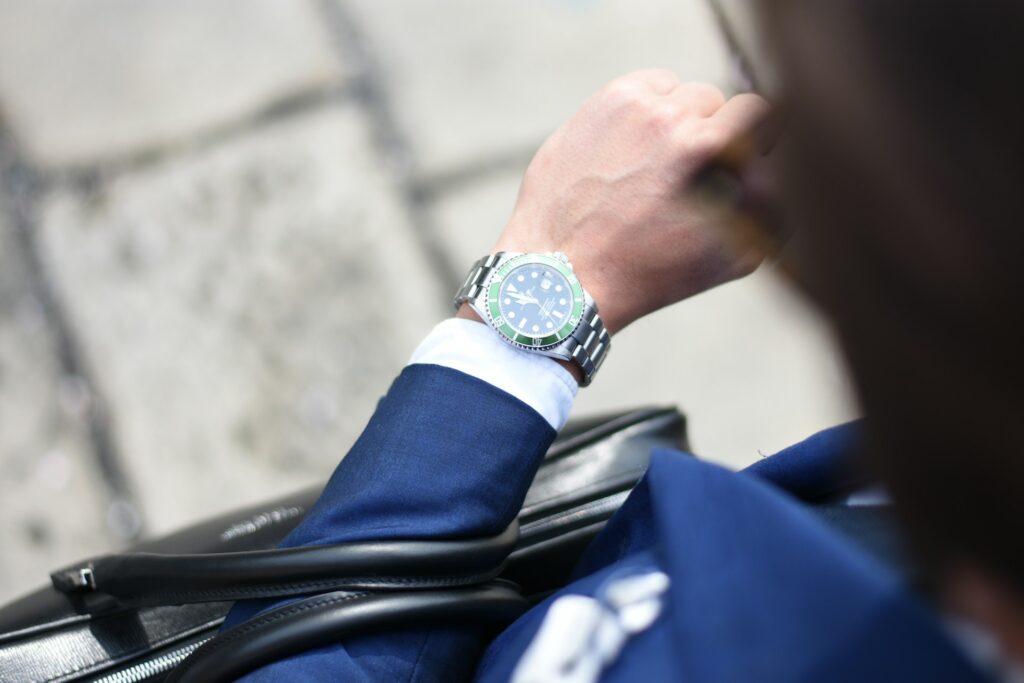
A six-figure timepiece may scream luxury, but its value often crashes like any other fashion fad. Meanwhile, frugal millionaires turn to functional smartwatches or under-$500 quartz pieces that tell time with precision. Luxury watch prices have slumped recently, making the market unpredictable for speculators . Why sink tens of thousands into an accessory when tech-enabled wristwear can monitor your health and calendar? These everyday watches get you where you need to be—on time and under budget. And if the band breaks or the battery dies, replacements cost a fraction of a Rolex service. Frugal millionaires prize quiet functionality over conspicuous dials.
A classic field watch or digital hybrid can last decades with proper care, then become a hand-me-down heirloom. They skip glossy packaging and pay-to-own financing options in favor of cash purchases. That low initial outlay means more capital stays invested in portfolios instead of on a wrist. Functionality beats status: alarms, step counts and stock-tracking apps over diamond bezels. For those who love mechanics, entry-level automatic watches provide craftsmanship without the hype. At the end of the day, a minute hand and a strap are all you realistically need. Punctuality, not price tag, is the ultimate sign of wealth confidence.
9. Private School Tuition

Even if they can foot the bill, frugal millionaires hesitate before signing the thousands-per-semester private-school checks. Strong district schools, magnet programs and charter options can deliver quality without lip-burning fees. When private tuition reaches $20,000 or more a year, savings can be redirected into 529 plans yielding compound growth and community involvement and enrichment programs can supplement rather than replace the public curriculum. Field trips, sports leagues and summer camps become flexible alternatives to locked-in tuition contracts. If a curriculum twist doesn’t fit, there’s no early-termination penalty bleeding into retirement accounts.
Frugal millionaires also tap scholarship search engines and local grants that go unclaimed every year. They negotiate sibling discounts or partial aid instead of writing blank checks. When college bills loom, teaching financial literacy at home becomes part of the education plan. Kids learn budgeting, saving and investing before they ever set foot on campus. In this way, education is funded by strategic planning, not parental bailouts. A frugal approach ensures academic excellence without sacrificing future financial goals. After all, the best lessons often occur outside the most expensive classrooms.
10. Expensive Jewelry
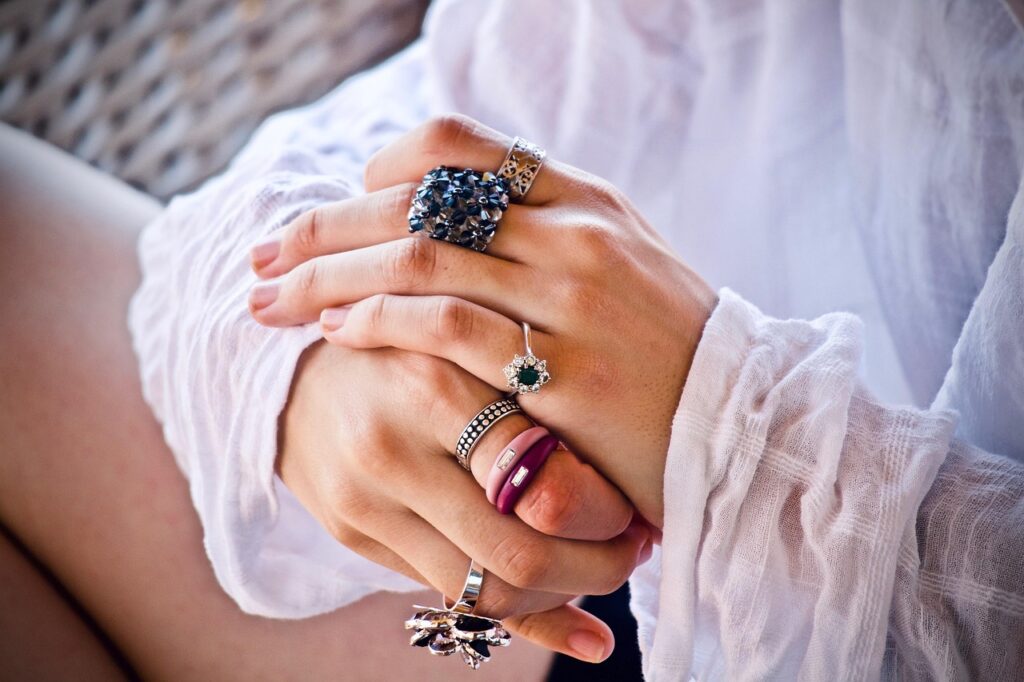
Diamonds might be forever, but that price tag isn’t guaranteed to shine in your investment ledger. The U.S. jewelry market saw consumer pullback last year, proving even the affluent hesitate to splurge on bling . Frugal millionaires choose modest heirlooms—gold studs or simple bands—that hold value without the haute-joaillerie markup. They track resale and pawn trends, knowing that classic designs typically recoup up to 80% of their pre-owned value. When tastes change, these pieces slide onto secondhand markets without steep losses. No velvet-lined boxes or concierge suggestions—just a tasteful accessory that weathers style cycles. Less-is-more shines when your jewelry budget actually earns a return.
If they do invest in gems, it’s through gold bullion or government-backed coins with transparent premiums. That fungible form of ‘jewelry’ trades like a commodity rather than languishes in a personal vault. Or they opt for lab-grown diamonds with transparent pricing, avoiding retail markups entirely. This scientific sparkle delivers ethical sourcing and certifiable value. Ultimately, they treat jewelry as a calculated purchase, not an emotional impulse. Keeping the collection lean ensures even your finger looks fiscally fit. True shine comes from compound interest, not carat counts.
11. Upscale Real-Estate Fluff
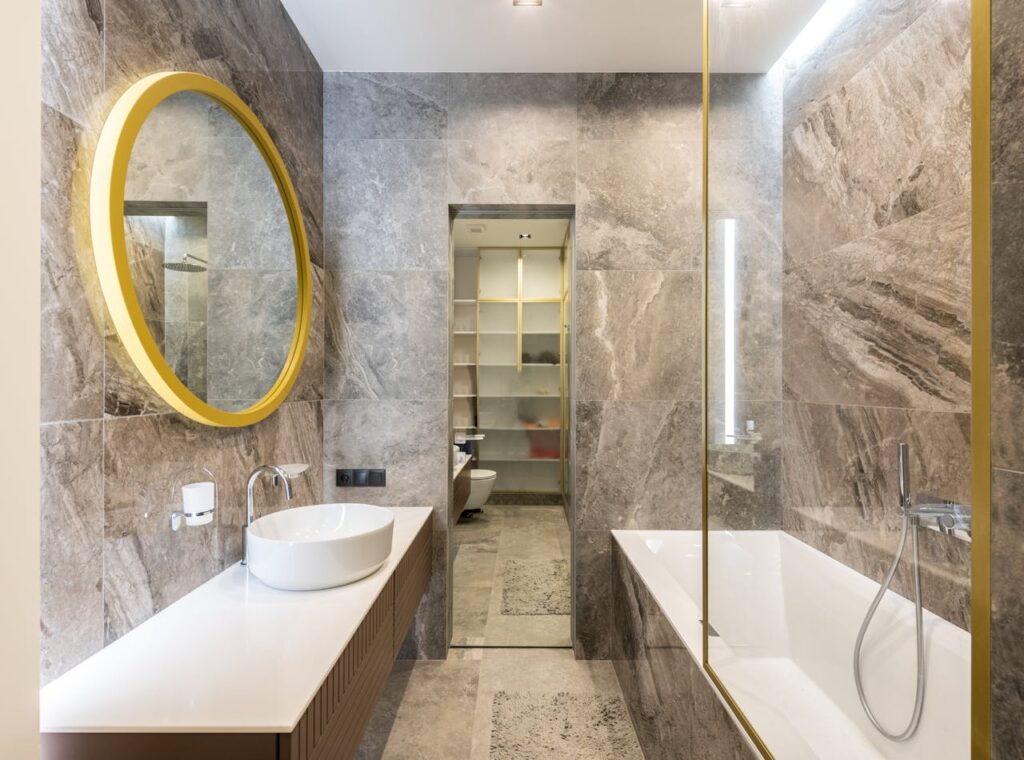
That ocean-view penthouse may Instagram like a dream, but its HOA dues and property taxes often sting like reality. Frugal millionaires buy homes for functionality and resale potential, not pristine champagne-colored walls . They compare price-per-square-foot against neighborhood comps, ignoring glossy fixtures with no resale bump. High-end finishes may look luxe, but they don’t guarantee higher sales prices or rent. Instead of skylights and spa-style baths, they seek open layouts and solid roofs that weather storms—literal and economic. When renovation is needed, they budget upgrades aligned with market trends, not personal whimsy. Every dollar spared on opulent trim gets reinvested or saved.
Frugal millionaires also calculate carrying costs—insurance, maintenance, and reserve fund contributions—to ensure positive cash flow. They refinance strategically, shaving years off mortgages rather than chasing curb appeal. Rental properties follow the same principle: practical layouts attract tenants faster than marble countertops. Their portfolios prioritize net income yield, not just headline rents. In a soft market, that ‘shiny’ property could sit idle, bleeding cash instead of churning profits. They buy bargains, upgrade wisely and sell when margins peak. This value-driven real-estate play ensures their bricks and mortar build, rather than break, their wealth.
12. Early-Adoption Gadgets

When the latest gadget hits the market, early adopters may fawn over fresh features, but frugal millionaires hang back. They’ve seen Gen-one smartphones bog down, VR headsets glitch and first-run drones crash—bugs that only software patches fix. Every new launch is priced at a premium for all the kinks you end up troubleshooting. So they wait for version two or three, snagging discounts once the hype cools. This patience can translate into savings big enough to buy that gadget’s second revision plus another quality accessory. In the meantime, their trusty devices get firmware updates that extend lifespan. And if a new feature truly delivers, they pounce on used marketplaces where enthusiasts offload at markdowns.
Frugal millionaires also weigh subscription ecosystems—service fees can balloon total cost of ownership. They calculate the full five-year expense, from hardware to app passes, before signing on the dotted line. No impulse buys—they benchmark alternatives, look for open-source options or wait for sales. When they upgrade, trade-in programs and refurbished channels recover value while lowering new-unit costs. This strategy encourages tech testing without financial hangovers. By turning planned obsolescence into a scheduled savings plan, they out-hack high-price tags. In their world, real innovation comes with a price cut, not just a price tag.
13. Timeshare Properties

“Vacation every year for life!” sounds delightful—until you open the maintenance fee bill that grows faster than inflation. Frugal millionaires rent or Airbnb, enjoying flexibility without a locked-in location. Timeshares can trap owners in high seasons, forcing stays when you don’t even want to go. Resale markets are flooded with desperate sellers, slashing values near zero. Maintenance fees, special assessments and tax hikes can cost more than the initial purchase. Frugal millionaires channel that capital into travel funds, picking destinations based on itinerary and deals. They chase experiences, not a week-in-Perth rule that feels like a golden prison.
Destination club memberships—pay-as-you-go adventures—beat timeshare lock-ins. They cross-book ski lodges one year and beach villas the next, maximizing variety. Trip-point systems flex with budgets, not annual calendars. Group travel platforms enable lower costs through shared stays and splitting expenses. When life changes, there’s no sunk cost dragging you into another decade of fees. Frugal millionaires travel smart: they treat vacation dollars like an investment, not a commitment. Their wanderlust thrives on choice, not chain-store lock-ins.
14. Premium Cable Bundles

Hundreds of channels fluff your guide, but you only ever watch a handful. Frugal millionaires cut cable cords fast, opting for à la carte streaming that fits real viewing habits. They track household usage, subscribing to one or two platforms and sharing family plans. When a show heats up, they sign up, binge it, then pause or cancel depending on the next season. This tactical subscription model can slash entertainment bills by 50–80%. Live-TV options like digital antennas cover local news without pricey bundles. Selling cable boxes back or letting them sit unused is another frugal move.
They pool streaming codes among friends and negotiate shared passwords like they’d swap concert tickets. Niche services—anime, sports, sci-fi—only stay active while there’s real demand. Trial periods become part of the watch-and-cancel routine. Technology side hustles, like DVB-T sticks on PCs, let them watch on any device without extra fees. If a platform doubles its standard rate, they shop alternatives instead of taking it sitting down. Frugal millionaires know that even tiny monthly savings compound over decades. Their entertainment budgets fuel Netflix-style choice without cable-bill shock.
15. Infomercial Gadgets

No matter how glossy the late-night pitch, those “miracle” peelers and spiralizers are usually gimmicks. Frugal millionaires read reviews, compare specs and skip impulse buys. They invest in multipurpose kitchen tools—stainless steel cookware sets that go from stovetop to oven. A high-quality chef’s knife and mandolin slicer handle 80% of jobs a “12-in-1 slicer” promises. Plus, the hype chasers often deliver flimsy plastics that crack by week two. Instead, frugal millionaires buy one well-reviewed gadget and rely on household staples. Every tool earns its keep, or it gets donated and replaced.
When they need to test a new kitchen hack, they rent or borrow from friends. Or they use online communities that recommend pro-grade gear at budget prices. They avoid the 3-for-1 offers that tack on shipping and handling like hidden taxes. Buying fewer, better items means less clutter and more counter space. That minimal-ism ethos carries first to the kitchen and then to investments. Frugal millionaires prove that fewer, higher-quality tools outlast “as seen on TV” throwaways. Their strategy: research, select, then rely on stickiness over novelty.
16. Trendy Fitness Classes

Boutique spin, barre or hot-yoga sessions may promise exclusivity, but a pricey drop-in fee doesn’t guarantee motivation. Frugal millionaires stick to fundamental moves: body-weight circuits, running clubs and local park workouts. They find free or donation-based classes that still push their limits. A simple yoga mat and online tutorials deliver most of the benefits without inflating bills. If they crave community, they join Meetup running groups or free outdoor boot camps. Trendy studios charge membership dues plus class fees that can exceed $30 per visit. Those costs compete with investing in a diversified portfolio, and the latter often wins.
When traveling, they swap boutique tokens for destination runs or body-weight challenges in hotel gyms. Step challenges with colleagues replace fancy studio perks for healthy competition. Healthy habits become daily routines, not one-and-done experiences. They channel savings into sports gear that lasts across seasons. A quality pair of sneakers outperforms boutique membership perks that never land on the calendar. Since fitness is a marathon, not a class, frugal millionaires place consistency over exclusivity. And they see the best ROI not in a trendy studio, but on the metrics of health and bank balances.
17. Designer Furniture
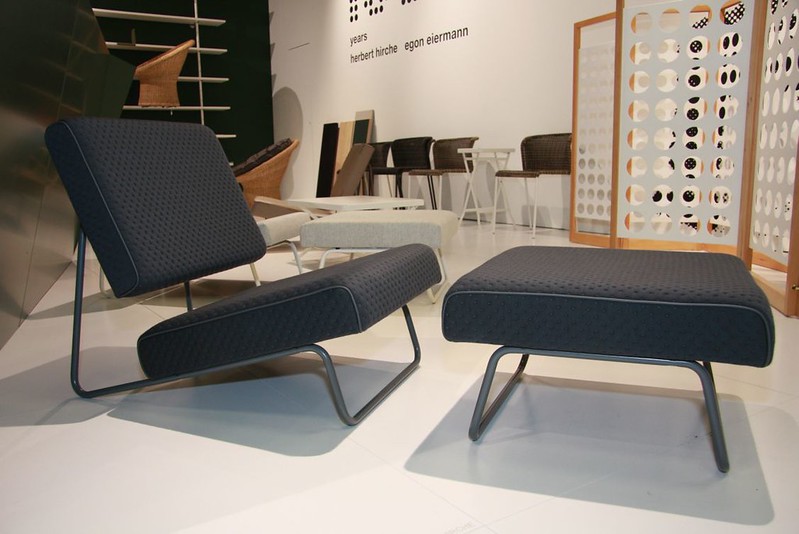
A living room loaded with designer sofas may spark envy, but the price tag often doesn’t recoup at resale. Frugal millionaires shop mass-market brands during sales, pairing finds with statement rugs or art for flair. They focus on durability—solid oak tables and linen-blend upholstery that stand up to daily life. When the style shifts, slipcovers and pillow swaps freshen aesthetics without buying new frames. Luxury furniture padding can cost more than a fully outfitted apartment, and that capital belongs in the markets. Instead, they accessorize on the cheap, using lamps, books and plants to create a curated look. This mix-and-match tactic extends the life and appeal of each core piece.
When a sofa finally wears out, they consign it online or donate for a tax write-off. New frames come from floor-model blow-out events at local stores. They also discover gems at estate sales and auctions, scoring unique items at fractions of retail. Quality hardware—like solid-wood legs and tight joints—takes precedence over brand labels. Seen better pieces? Rather than upgrade everything, they swap in a single accent chair. That incremental refresh costs hundreds, not thousands. Frugal millionaires prove that good design and good sense can share the same living space.
18. Fancy Funeral Pre-planning Packages

Even in estate planning, frugal millionaires avoid overpriced funeral packages that bundle bells and whistles you’ll never use. They set a clear budget, comparing providers and opting for direct cremation or simple services to shave thousands off the total bill. Many premium plans upsell deluxe caskets, embalming options and elite transportation like gold-trimmed hearses. These add-ons may sound dignified, but seldom influence the true cost of a memorial. Frugal millionaires document basic preferences—venue, music and officiant—and let families handle personalization. They fund a modest irrevocable trust or designate life-insurance proceeds for funeral expenses, ensuring costs don’t drain savings. That approach avoids funeral-home markups and the emotion-driven pressures of grieving families.
When the time comes, loved ones simply call the chosen provider, show the plan and let the prepaid fund cover essentials. By forgoing elaborate floral arrangements and high-end packages, they keep spending transparent and manageable. If family wants extra touches, they pay out-of-pocket—a fair split between tribute and thrift. Frugal millionaires often volunteer as greeters or program designers, trimming labor costs. They remind heirs that a heartfelt service doesn’t require plated meals or guest mementos. This no-frills philosophy respects budgets and memories equally. After all, the best farewell isn’t measured by costs, but by the moments shared.
This article is for informational purposes only and should not be construed as financial advice. Consult a financial professional before making investment or other financial decisions. The author and publisher make no warranties of any kind.







